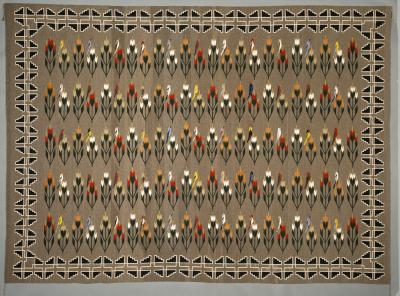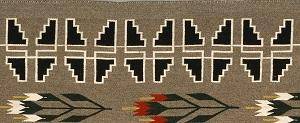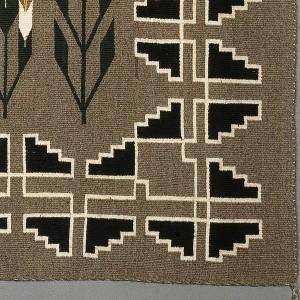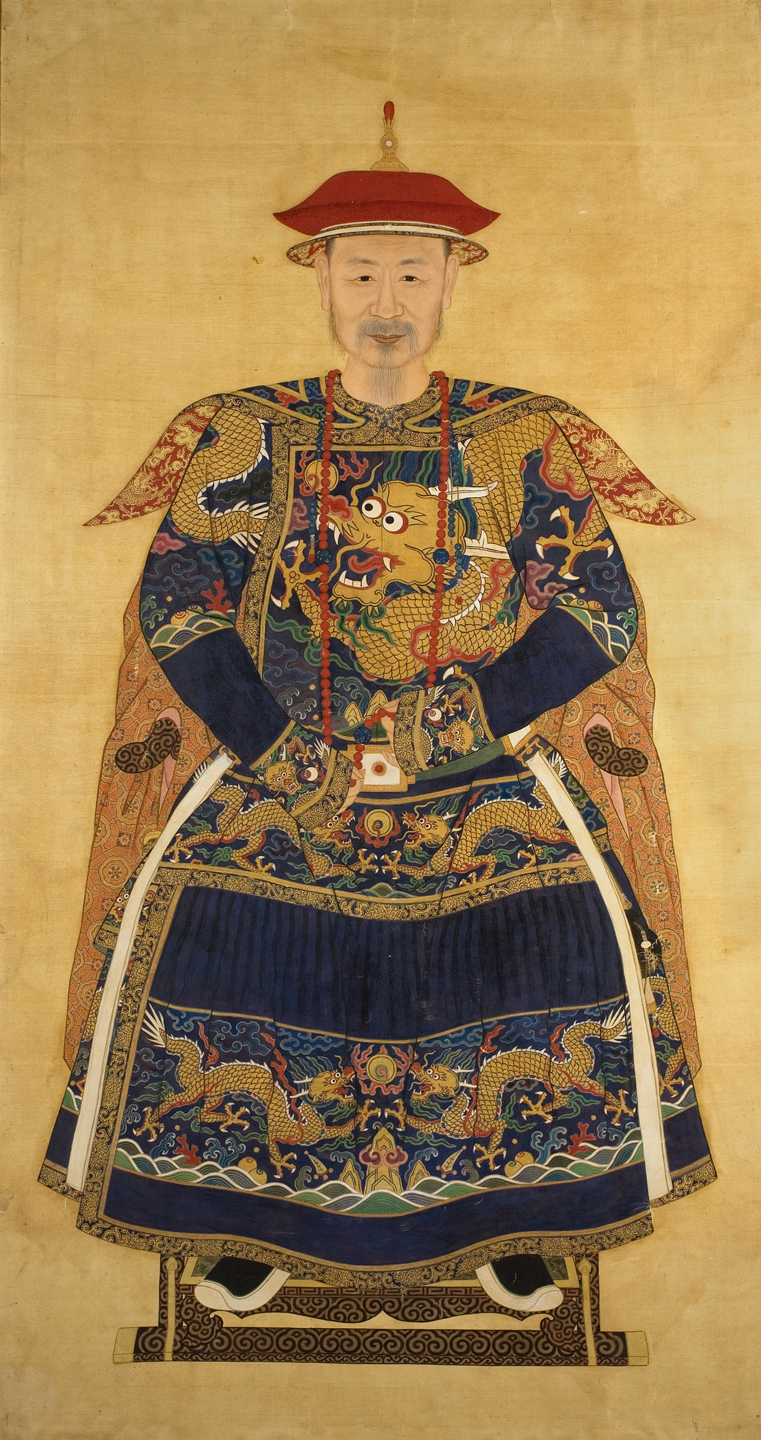Students will look at the Bird and Cornstalk Rug in pairs and discuss Yellowhair’s inspiration from both natural and man-made forms. They will then engage in a creative writing exercise that develops their awareness of symbolism in their daily lives.
Students will be able to:
- describe the symbolic meaning of the birds in Ason Yellowhair’s rug;
- create two images from the natural world that symbolize something meaningful to them;
- write a piece that weaves together the symbols they have created; and
- choose vocabulary and writing devices that communicate their ideas clearly and powerfully for other readers and listeners.
Lesson
- Project the image of Ason Yellowhair’s Bird and Cornstalk Rug, or hand-out color copies to students. Have students brainstorm with a partner about the images on the rug to answer the following questions. Let them know they don’t need to worry about being right or wrong:
- Where do they think the artist found her inspiration for the designs of the leaves and stalks? (Yellowhair’s daughter says her inspiration came from a Wrigley’s spearmint gum wrapper.)
- What symbolic meaning might the birds have for the artist? (According to Yellowhair, her birds “express a positive and happy outlook on life.”)
- Do the geometric shapes around the edges have any special meaning? (The shapes are part of Yellowhair’s family tradition, as is the large size.)
- Have some of the volunteers share their answers with the class.
- Creativity warm-up: Have students write down three logos or symbols they encounter in everyday life, and have them write at least two other things these symbols could mean.
- Ask students to draw upon experiences in their neighborhoods or on trips they may have taken to create two symbols based on natural elements. The symbols could be culturally influenced or have purely personal meaning. They should draw their symbols with colored pencils in journals on separate pieces of paper.
- Have students complete the writing activity and share their pieces with a partner or small groups of no more than four students. If you would like to give students more time to write, you may have them complete the writing at home or in class the next day. Writing Activity:
- Write a descriptive paragraph or poem weaving together the two symbols you created. The goal is to enable the reader to see and know the symbols as well as their meaning.
- If you would like, you can literally “weave” words pictorially onto the page. Remember to draw upon your senses to create more powerful, vivid images (i.e. hear, see, smell, taste, and touch).
- Have students get into small groups to share and critique each other’s pieces by answering the following questions:
- What were two powerful words or phrases in the writing?
- Did any phrasing help you hear, see, smell, or taste what the writer was describing?
- Did the symbolic imagery of the rug and the writer’s own symbols emerge through the writing?
- What is one way the writing could have been more descriptive?
Materials
- Colored pencils and journals or scratch paper for each student
- One copy of the Writing Activity and Writing Critique questions for each student (found in lesson below)
- Student journals/lined paper and pencils, or computers with printers, for students to write their letters
- About the Art section on Ason Yellowhair’s Bird and Cornstalk Rug (included with the lesson plan) or student access to this part of Creativity Resource online
- One color copy of the rug for every four students, or the ability to project the image in color on a wall or screen (ideal)
Standards
- Visual Arts
- Observe and Learn to Comprehend
- Relate and Connect to Transfer
- Envision and Critique to Reflect
- Language Arts
- Oral Expression and Listening
- Research and Reasoning
- Writing and Composition
- Reading for All Purposes
- Collaboration
- Critical Thinking & Reasoning
- Information Literacy
- Invention
- Self-Direction

Bird and Cornstalk Rug
Ason Yellowhair, United States
1983
7.8 ft. X 10.9 ft.
The Gloria F. Ross Collection of Contemporary Navajo Weaving of the Denver Art Museum, 1984.4
Photograph © Denver Art Museum 2009. All Rights Reserved.
Ason Yellowhair is an accomplished weaver who lives on the Navajo Nation, an area that covers over 27,000 square miles of land, extending into Utah, New Mexico, and Arizona. In 2002, she was presented with a Lifetime Achievement Award from the Arizona State Museum at the University of Arizona. Yellowhair began weaving banded geometric designs and moved to pictorial rugs in the 1950s, eventually settling on her present style in the 1970s. She describes weaving as very hard work: “You perspire a lot. A man might work hard chopping wood, his shirt hanging out or maybe no shirt at all. It’s the same with weaving—very hard work.” Yellowhair has shared her skill with her family, teaching most of her daughters to weave when they were children, and continuing a tradition that has been passed down from one generation to the next.
This type of Navajo weaving is referred to as a pictorial rug. Although these rugs became common in the late 1800s, they were not sold as “art” until the 1900s. They are now sold to tourists, collectors, and museums. Yellowhair’s Bird and Cornstalk Rug is part of the DAM’s Gloria Ross Collection—a collection of Navajo rugs from the late 1900s.
The history of Navajo weaving is one of change and constant innovation. Navajos learned loom weaving sometime in the 1600s from neighboring Pueblo peoples. The art form was further enhanced by the introduction of sheep by the Spanish. Trade, tourism, and the art market have been an inspiration and influence for artists, and have made a major impact on Navajo weaving.
Details

Rug Design
This rug follows the unique Yellowhair family style, which is characterized by a large horizontal format, simple borders, and several rows of plants and birds running perpendicular to the weaving direction.

Plant Stalks
Unidentified plant stalks are arranged in horizontal bands across the width of the rug. They are adorned with red, white, orange, and beige flowers. According to her daughter, Yellowhair based the stylized plants on designs she saw on Wrigley’s Spearmint Chewing Gum wrappers.

Birds
Although birds are significant in traditional Navajo religion, Yellowhair says her birds carry no specific sacred meaning, but “express a positive and happy outlook on life.”

Border
The border is made up of a geometric pattern that is repeated all the way around the edge of the rug, framing the picture in the center.

Grey Background
Notice the uneven coloration of the grey background. The wool used to make this rug would have come from multiple batches that would have been individually dyed, resulting in slight variations in color between batches.
Funding for object education resources provided by a grant from the Morgridge Family Foundation. Additional funding provided by the William Randolph Hearst Endowment for Education Programs, and Xcel Energy Foundation. We thank our colleagues at the University of Denver Morgridge College of Education.
The images on this page are intended for classroom use only and may not be reproduced for other reasons without the permission of the Denver Art Museum. This object may not currently be on display at the museum.






